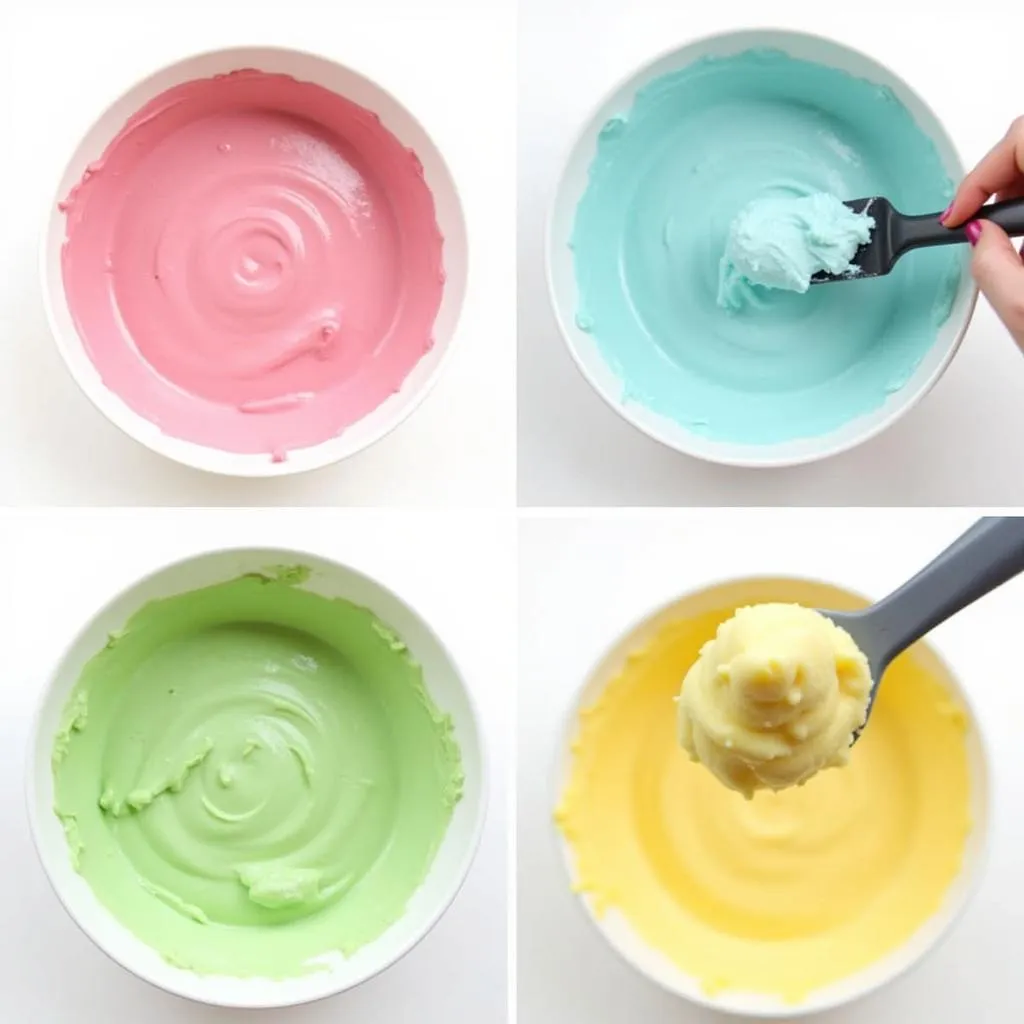Coloring buttercream might seem straightforward, but achieving vibrant and consistent hues requires a bit of finesse. Whether you’re a seasoned baker or just starting out, mastering the art of how to color buttercream opens a world of decorating possibilities. From delicate pastels to bold, statement shades, the right techniques can elevate your cakes and cupcakes from simple to spectacular.
Understanding Food Coloring
Before diving into the how-to’s, it’s crucial to understand the types of food coloring at your disposal. Each type interacts differently with buttercream, influencing the final color payoff and vibrancy.
-
Liquid Food Coloring: The most common and readily available type, liquid food coloring is great for achieving lighter shades. However, using a large amount can alter the consistency of your buttercream, making it too runny.
-
Gel Food Coloring: Highly concentrated and offering a punch of color, gel food coloring is perfect for achieving deep, rich hues without thinning your buttercream. A little goes a long way!
-
Powdered Food Coloring: Ideal for vibrant colors and achieving specific shades like black or red, powdered food coloring requires careful incorporation to avoid clumping.
Tips for Coloring Buttercream
-
Start with a White Base: Always begin with a white buttercream base, as this provides a neutral canvas for the color to shine through.
-
Add Color Gradually: Patience is key when coloring buttercream. Start with a small amount of coloring, mix thoroughly, and gradually add more until you achieve the desired shade.
-
Use Toothpicks: For precise color additions, dip a toothpick into the coloring and swirl it into the buttercream. This allows for better control and prevents over-coloring.
-
Adjust for Butter Temperature: Buttercream’s temperature can affect color absorption. If your buttercream is too cold, the color might appear lighter. Allow it to come to room temperature for optimal results.
Creating Specific Colors
While basic colors are easy to achieve, mastering specific shades can be tricky. Here are some tips for creating common yet challenging hues:
- Red: Achieving a true red can be challenging, as many red food colorings tend towards pink. Using a high-quality red gel food coloring is recommended.
how to make maroon colored icing
-
Black: Creating black buttercream requires patience and the right technique. Start with a dark chocolate buttercream base and gradually incorporate black gel food coloring until the desired shade is achieved.
-
Skin Tones: Mixing skin tones requires a blend of colors, typically a combination of ivory, pink, and a touch of brown or yellow, depending on the desired shade.
- Metallic Shades: For a touch of elegance, metallic food colorings are available in gold, silver, and other shimmering hues. These are typically added after frosting to create accents and details.
how to make gold frosting with food coloring
 Mixing Buttercream Colors
Mixing Buttercream Colors
Troubleshooting Common Issues
-
Uneven Color: If your buttercream has streaks of color, it indicates improper mixing. Continue beating the buttercream until the color is uniform.
-
Color Too Light: If the shade isn’t vibrant enough, gradually add more food coloring, a little at a time.
-
Color Too Dark: To lighten a buttercream that’s too dark, add small amounts of plain white buttercream and mix thoroughly until the desired shade is achieved.
Expert Insights
“When it comes to coloring buttercream, remember that less is more,” says renowned pastry chef, Emily Carter. “Start with a small amount of coloring and build gradually. This allows for greater control and prevents over-coloring, which can ruin the consistency of your buttercream.”
Conclusion
Coloring buttercream is a delightful art that allows you to unleash your creativity in the kitchen. By understanding the different types of food coloring, using proper techniques, and practicing patience, you can achieve vibrant and consistent hues for all your baking creations. So, grab your favorite food colorings and transform your next cake into a masterpiece of color!
FAQs
Can I use natural food coloring to color buttercream?
Yes, you can use natural food colorings like beet juice, turmeric, and spinach puree to tint buttercream. However, natural dyes tend to be less vibrant and may impart a slight flavor to your frosting.
How do I store colored buttercream?
Store colored buttercream in an airtight container at room temperature for up to 2 days or in the refrigerator for up to a week. Before using, allow it to come to room temperature and re-whip for a few seconds to restore its texture.
What can I do with leftover colored buttercream?
Leftover colored buttercream can be used to frost cookies, fill cake pops, or even enjoyed as a dip for fresh fruit.
Can I mix different brands of food coloring?
While you can mix different brands, it’s best to stick with one brand for consistency. Different brands may have varying concentrations and color payoff, leading to unpredictable results.
How do I achieve a tie-dye effect with buttercream?
To create a tie-dye effect, divide your buttercream into separate bowls and color each with a different shade. Place dollops of each color into your piping bag and frost your cake or cupcakes as desired. The colors will swirl together naturally, creating a beautiful tie-dye effect.
Need more help with coloring your buttercream? Contact our team at 0373298888, email us at [email protected], or visit us at 86 Cầu Giấy, Hà Nội. We’re available 24/7 to assist you!

